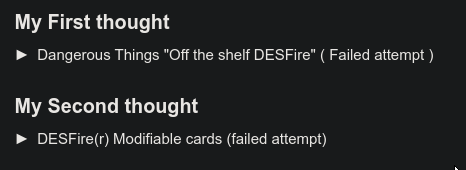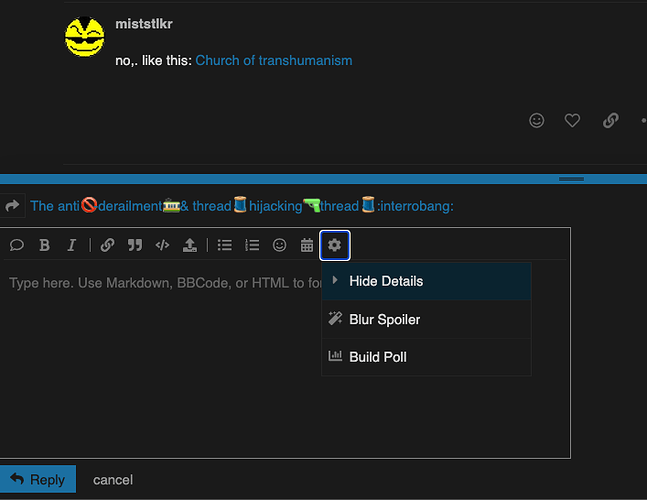I agree to this, I phrased it wrong in my initial post. I still think it should have ended up like swiss cheese.
I agree to this. I puncture them daily at work, but generally, they leak still if you don’t stop the flow. I didn’t have giant patches of blood under my skin.
I agree to this.
I was figuring I was going to be open with her. I was hoping we can work it out to where she is comfortable with just not throwing the needles deep.
This isn’t my blackout side. If I want to add them to this side, I will just add them and get the scar touched up. I am trying to plan out my next tattoo. It is going to have a 4 eyed lady, and I would like to put a white xLED there in the center of her forehead. The other one, I was already planning on tattooing over, for science.
I guess all I am doing is trying to justify my bad decision. I know it won’t happen here, but it makes me feel less crazy running it past everyone.
The act of tattooing also opens up holes in your skin and opens the pores wide… both are excellent ways for the blood to pour out of your body while getting mixed with the ink… so odds are you most likely had a good amount of bleeding, you just didn’t realise it. ![]()
For a glass implant I would think that the odds are the artist will feel if it hits it.
And you might even be able to assess if it got hit or not later (state of the art ultrasound and other imaging equipment perhaps?)
Yet I would not personally risk it.
Now… if we are talking about a flex…
There is always a chance that the needles might reach it and no one would ever realise it untill it’s too late (i.e. the implant might keep working but the seal might be punctured)
A flex implant’s ideal depth would be roughly 0.1mm deeper than the ideal ink deposit location.
A tattoo needle reaches easily 0.2mm depth deviation (or more) while tattooing. (i.e. if you set your needles to 0.4mm deep, you are depositing ink somewhere up to 0.6mm deep (due to the first layers of skin being compacted by the artist’s applied pressure).
Would you risk it, knowing the odds are vastly in favour of the needles reaching the flex?
Personally, I would not trust even a machine to tattoo me over a flex. ![]()
That said… I’m talking about “chances”, so it might be alright. ![]()
Or you might aim at a more superficial layer (thus fading prone) tattoo instead.
+1 to that, if possible.
Just to clarify, because I think I was under the wrong impression
Can an iPhone even scan a mifare 1k?
I’ve been trying to use TagInfo just to confirm the chip was alive, I know programming it with iOS wasn’t a thing
But I was under the impression tag info could detect the chip at least
I just tried with 2 physical cards with a mifare 1k and nothing, which sounds like confirmation… but maybe my phones wacky
https://developer.apple.com/forums/thread/133179
after looking that’s not as helpful as I assumed but hopefully helps a little bit
Yea, I tried compatibility mode, and it doesn’t do much of anything
But nfc tools has been slightly broken for me for a while, not sure if it’s a wide spread issue or not
Nice ask!
I’m not in the loop for Apple stuff, but @RyuuzakiJulio might know the answer? ![]()
Meanwhile… can you get a friend with an Android phone to try the read?
Can someone explain to me the difference between Magic 1k and Magic Ntag
I can try…
Mifare CLASSIC vs. Mifare NTAG
Keeping it bare basics for you
The Mifare CLASSIC Magic 1k Is an early HF technology, commonly used in many older security systems, but still readily available in alot of “Chinese” products.
The S50 chip was cracked and allows us to write our own 4byte NUID. This is the Chip we use in our implants ( xM1 , FlexM1 gen1a and gen 2, FlexMT…)and with software / apps we can read and write to them.
The fix that followed included a 7byte UID which means if a newer system requires the full 7Bytes we are S.O.L
The use of the Term Mifare is another story mostly unrelated to your question.
A Much more comprehensive explanation can be found in Amals Info Post
If you need further clarification just ask and I can try to expand further
Rather than the Mifare Classic that we can use on Mifare Classic systems and change the NUID, The Magic Ntag card can emulate a few different types of cards ( BUT NOT Mifare CLASSIC )
It can obviously emulate:
- MIFARE NTAG 213, 215 (215 is used for Amiibo), 216 ( 216 is the same as in the NExT etc )
 These are 100% emulated,
These are 100% emulated,
 These are limited emulated ( counter and tearing emulation are not 1:1 with original chipsets.)
These are limited emulated ( counter and tearing emulation are not 1:1 with original chipsets.)
ALSO - Mifare NTAG®
210
212
I2C 1K
I2C 2K ( I2C 2K is the same as in thexSIID )
I2C 1K Plus
12C 2K Plus
And the MIFARE Ultralight which is often confused with the MIFARE Classic
- MIFARE Ultralight
EV1 48k
EV1 128k
So the MIFARE Magic NTAG is capable of emulating a lot more products than the CLASSIC so it is a potentially a great option for a lot of situations.
Although the NTAG MIFARE Ultralight EV1 emulation is IN THEORY 100% compatible with all MIFARE readers, writers and software, I am not 100% sure this will include the MIFARE Classic readers, writers and software; Personally I think it will come down to the specific reader, But I stand to be corrected on that one ( and anything else I have mentioned above for that matter )
Anyway
If / when I get the FlexMN, That is something I will test, unless somebody already has.
If you want, you can grab a test card from KSEC
I hope that goes some way to clarifying for you, sorry it was longer than I planned.
But again if you need more explanation, just ask
![]()
IT WORKED! My car started, everything working correctly! Had a single line of code off, and a single pin was off on my switch diagram. Working now! Getting everything buttoned up right now, gonna design the front panel tonight and get that printed tomorrow.
I’ll have a project write-up with video posted in the next few hours ![]()
Still too soon ![]()
Okay, I have a silly question. I’ve done the discobot tutorial and I’ve googled a ton, but I can’t figure it out.
How do you do the collapsable sections that people use in write-ups? Where it has a little arrow and a line of text, that you can expand to view the full text?
I really can’t figure it out lmao
Thank you! I’ve looked there, but I’m just blind apparently haha
What Dartho said. Thanks. Sorry for jumping in and causing confusion. Lots of simultaneous posting there.
A little tip ( Just the Tip ![]() )
)
You can select hide details and fill it out
OR
you can also Highlight what you want to hide, then select hide details, and just give it a heading
![]()
&
The same goes for Blur Spoiler
Thanks mate, only other question I really have is should a Magic Ntag be compatible with IOS even though Magic 1k isn’t? I assume yes since you said it can emulate Ntag216 which obviously iOS can read




